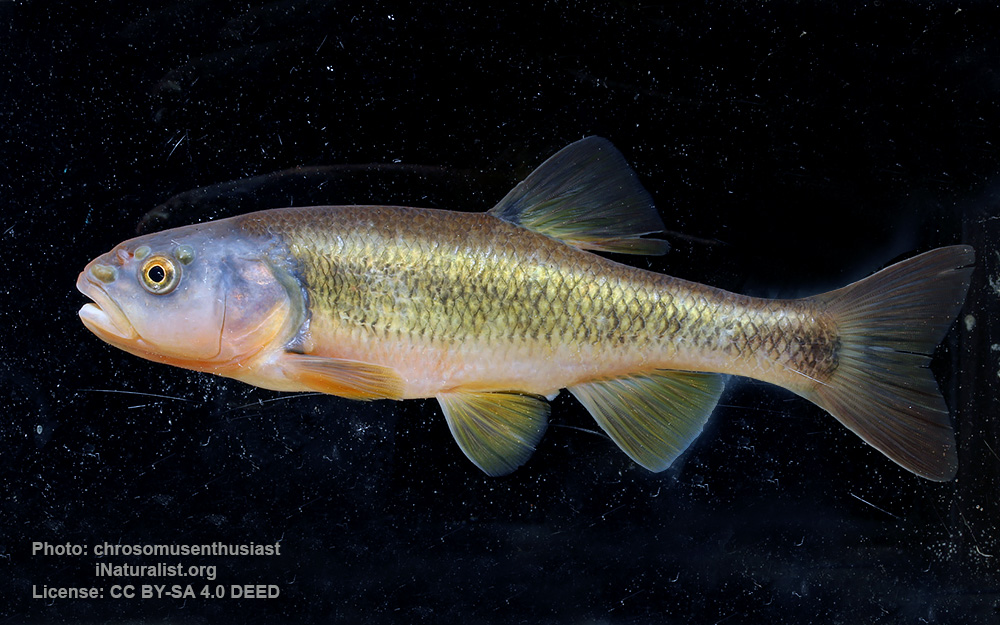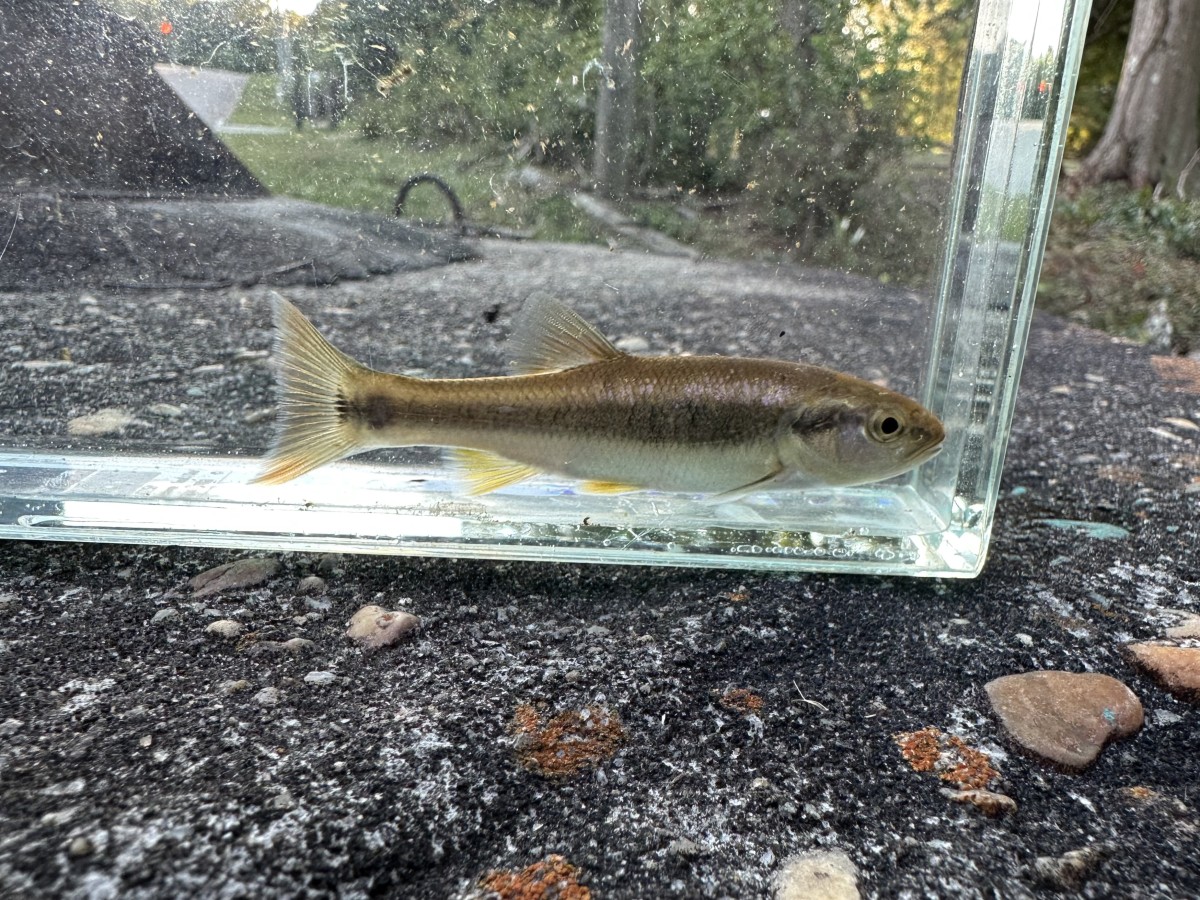Dixie chub
(Semotilus thoreauianus)

Image source: chrosomusenthusiast | inaturalist.org
Classification
General data
The Dixie chub is similar in shape to the creek chub (Semotilus atromaculatus), although it is typically a more robust and shorter than the creek chub. It also has larger and fewer lateral line scales, the origin of the dorsal fin is to the rear of that of the pelvic fin whereas in S. atromaculatus it sits directly over the pelvic fin origin, and the spots on the dorsal fin and caudal fin are less distinct.
In the breeding season the males develop four large, hooked tubercles on either side of the head, with those nearest the nares frequently becoming fused.
They are generally dark on the back, with the underside being colored from orange to pink on the underside while its fins are yellow-orange. Compared to S. atromaculatus the Dixie chub has a smaller number of head tubercles on its gill covers and caudal fin. The spot on the caudal peduncle is more diffuse than in S. atromaculatus which is normally wedge-shaped and distinct from the lateral stripe, while the equivalent spot in S. atromaculatus is quadrilateral and is joined to the lateral stripe. The lateral strip is dark and rather wide but not very distinct.
It grows to a length of 15 cm (5.9 in).
The Dixie chub is endemic to rivers that flow into the Gulf of Mexico in the south-eastern United States from the Tombigbee River in Alabama to the Ochlockonee River drainage in Georgia and Florida. It has also been recorded from three tributaries of Bear Creek in Colbert County, Alabama, the first records from the drainage of the Tennessee River. The Dixie chub is sympatric with S. atromaculatus in the rivers draining into Mobile Bay where it is found in the coastal reaches up to the Fall Line but replaces it eastwards from the Conecuh River.
The Dixie chub is found in small, clear headwater streams in the pools of creeks and small rivers with sand or gravel substrates.[6]












